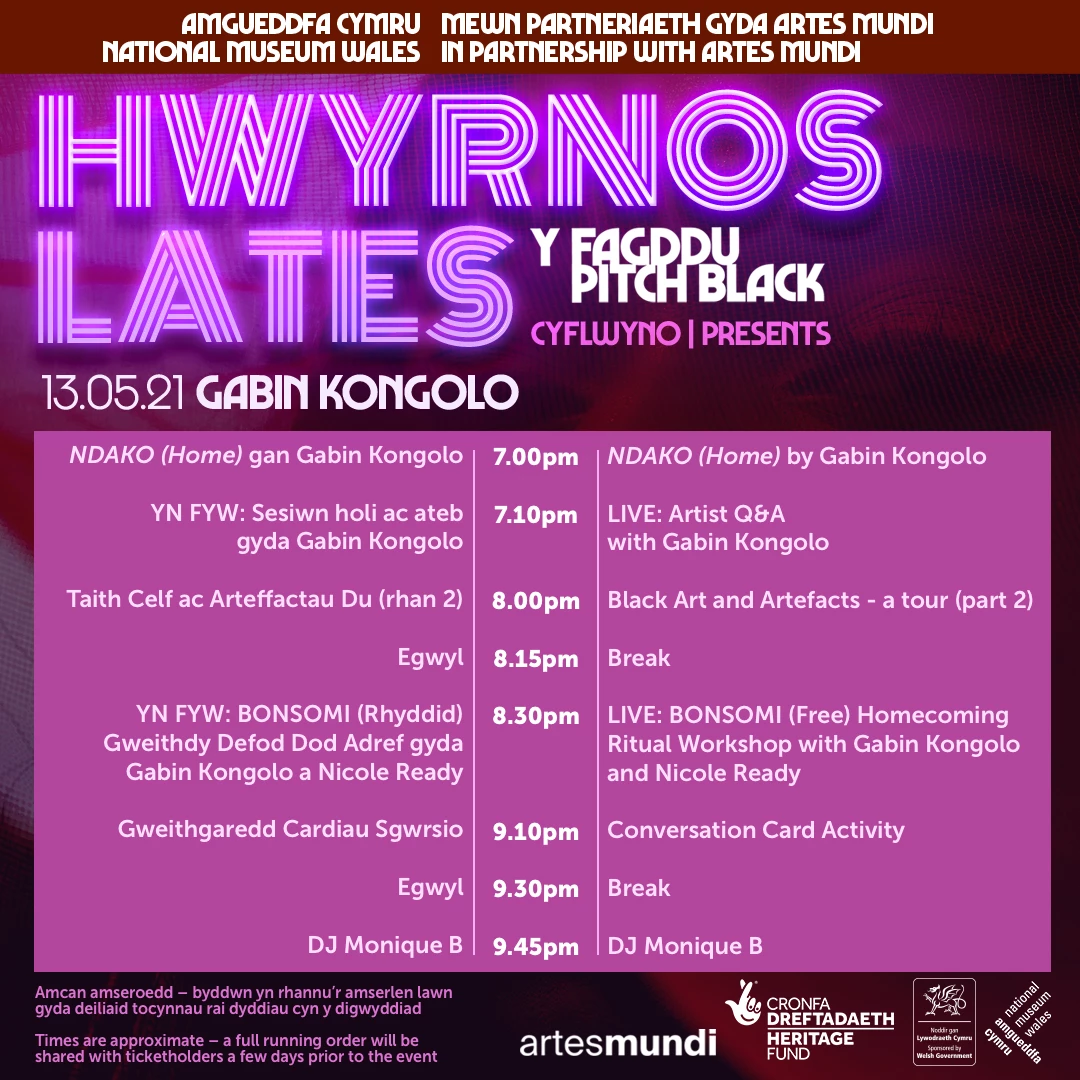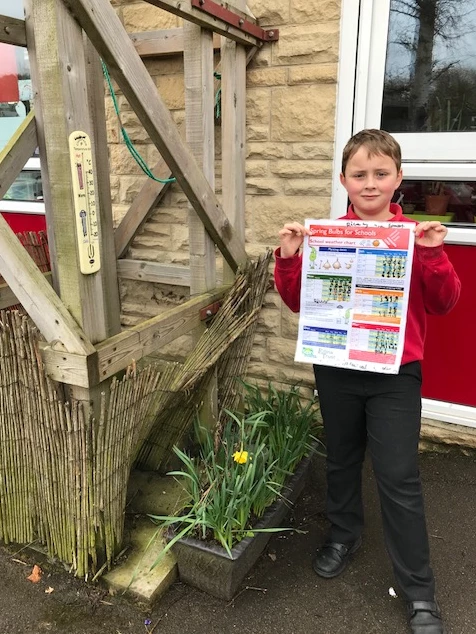The National Museum Cardiff presents a new and exciting event this May. Their Lates event series returns on 6th May with Lates: PITCH BLACK.
Every Thursday in May, explore Black identity through the lenses of four unique voices. With interactive workshops, Q&As, DJ sets and so much more, this festival will open up the conversation around what it means to be Black.
Kate Bryony sat down with the curator, Umulkhayr Mohamed, to discuss the festival and why it’s important for white people to engage and learn from the events.
My name is Kate Bryony. I’m a student journalist based in South Wales. I love sharing my passion for culture, art, and entertainment, as well as travel.
Find me on Instagram @katebryony or Twitter @bryonykate.
Can you tell us a little bit about the event?
Lates: PITCH BLACK is an online festival of events that will celebrate Blackness as boundless and infinite. The series includes multi-artform commissions that will interrogate the impact of the British Empire and its culture on Black people and their history, whilst exploring new ways to dream collectively.
Lates: PITCH BLACK presents events that will be running every Thursday evening throughout May 2021. It will include bold new work created by our PITCH BLACK artists; Gabin Kongolo, June Campbell-Davies, Omikemi and Yvonne Connikie. Commissioned by National Museum Cardiff and Artes Mundi.
Alongside that, it’ll present artist Q&As, interactive workshop sessions, film screenings, DJ sets and exclusive Black History tours of the National Museum of Wales Collections, as well as extras from the Artes Mundi 9 exhibition.
The artists
June Campbell Davies artwork is titled 'Sometimes we’re invisible' and is a performance-based inquiry into the presence of Black people in Art from National Museum Cardiff’s historic art collection. Explored using languages of Dance, Symbolism and Imagery & references to Colonialism, the work will be accompanied by with a soundscape produced by Ffion Campbell-Davies. Set in a transformed National Museum Cardiff’s historic art gallery, that has been dressed in the remnants of otherwise hidden pasts. The scene is set for Campbell Davis to begin revealing through movement the weight of ancestral connections.
Gabin Kongolo's cine poem is titled 'NDAKO (Home)' and reveals the poetic nature and experience of coming to Wales from Congo as refugees. The work explores the refugee experience in relation to dreams, struggles and an evolving sense of identity from multiple people who are from and have now left the Democratic Republic of Congo. NDAKO (Home) is based on testimonies given by Kongolo’s Mum, Dad, Uncle and Auntie as well as fellow filmmaker Horeb Mubambo. The visuals reflect the sentiments that have been shared through candid conversations between these individuals and Kongolo, as well as places that will be familiar to Cardiff’s Congolese community. The words become a lyrical distillation of the intimate details of what it means to move through the world as a displaced person.
Omikemi audio-visual artwork is titled 'Dreaming Bodies' and has been developed out of an a Black-centred somatic inquiry for LGBTQIA+ disabled folx. The inquiry participants, those who contributed to the inquiry, explored embodied activities such as life drawing, body poem and elements of Qi Gong and Capoeira Angola. The Dreaming Bodies workshop poses many questions including ‘what do we need and desire individually and collectively, at this time and what kinds of practices, communities, places and things would make our lives more sustainable and joyful?’ In the pursuit of increased agency and possibility, a sense of community and care resulting in an artwork that engages with the idea and implications of body supremacy.
Yvonne Connike's film is titled 'A time for New Dreams' and takes its name from a book by Ben Okri, a collection of essays on how the world is and how it could be. The work is an experimental and intergenerational manifestation of the dreams of the Windrush generation in Wales. Filmed in Newport and based on archival material and new testimonials. The work ‘A time for New Dreams’ reflects on and the ambitions the Windrush generation held by as Invited Citizens, as well as the racism they endured upon arrival. Moving through time, the film demonstrates how the recent Windrush Scandal has resulted in these dreams being turned into waking nightmares. So, right now, this is a time for new dreams.
What makes this particular event series so special?
We are collaborating with Artes Mundi to bring about this festival, which has been a really exciting collaboration. It’s meant that the artists we commissioned from Lates had the opportunity to draw from engaging with another National Arts Organisation in addition to exploring the National Collections of Wales during their research and development phase. This lasted for a couple of months and it really helped inform the commissions that the Lates artists ended up producing. This was really important; we wanted the artist commissions to really nurture the artists we worked with so that they could go forward and produce more great art as the potential for this is there for each of them to do this.
Also, this is also the first time that Lates is going online, meaning that people who live too far from National Museum Cardiff to come down for an evening event no longer have to miss out. Despite us having to move online this has turned into a real opportunity. We decided to shift the regular one-night event to four events happening each Thursday night throughout May so as to give our audiences even more amazing content ranging from artist Q&As, interactive workshop sessions, film screenings, and DJ sets!
Why is this festival so important?
One of the ways that white privilege reveals itself, culturally, is the discomfort that some white people have in engaging with art and culture that doesn't centre around their lived experience. Mainstream culture is organised in a way that actively marginalises non-white people and their experiences. It’s for this reason that I feel that it is important for white people, in particular, to attend this festival as it won't only be an engaging experience but an educational one for them.
Even more specifically I think white Welsh people would really benefit from attending this festival as there is parts of the programme that show very specifically how Wales has benefited from Black people and their contributions to Welsh and British society. It’s something that sadly is too often overlooked.
What type of people will enjoy this festival?
These events are for anyone who understands the importance of engaging with Black art and Black history, beyond just Black History Month. It’s also for people who want to see national institutions show up and showcase the experiences of marginalised communities. It’s about understanding that this is what these institutions should not only be doing, but also that they are uniquely positioned to do so with the wealth of knowledge and resources that they have. They can and should share with these communities.
I dreamt up this festival back in 2019, long before the latest resurgence of the Black Lives Matter movement. Since that happened last summer, we have been shown and witnessed so much Black trauma and we paid attention, as we should. That being said, I truly believe that we should also invest in celebrating the beauty that is Blackness. Black lives don't only matter they are also worth celebrating, commemorating, and exalting, like all other life, and this event is for anyone that agrees.
What inspired the idea behind this event series?
Well, Amgueddfa Cymru- National Museum Cardiff launched the Lates events a couple of years ago now as a part of their public programme. Each version of Lates having a different theme. Space and Dino being two of the previous themes but following the same general offering as an 'after hours events' that gave people a chance to experience the museum and its collections in a new way and artists a chance to work with the museum in creating artistic responses to these parts of our collections and the event's theme.
And with that in mind, I approached my colleagues with the idea of doing a Lates events that really highlighted, in a celebratory light, Black History as it connects to Wales's Black communities, back in 2019! So as the lead curator of this festival I've been dreaming up this festival for a long time, and really looking forward for it to be starting next week.
How is the idea of ‘Blackness’ celebrated across the festival?
Well, first and foremost, it centres on the perspectives of Black people throughout the programme. From myself as a Black curator, leading the curation of the programme, to the Lates artists, workshop leaders, the films we are screening and even the DJs and their DJ sets. This is really important for a number of reasons, but perhaps the central reason being that we need to carve out space to showcase as many individual experiences of Blackness as possible. This allows us to show, rather than just tell, how vast and varied the so-called 'Black experience' is. We aren't a monolith, despite having some shared experiences. We can't celebrate Blackness while simultaneously only provided limited view of it.
What makes this festival for everyone?
I should say, I've spoken a lot about the art that this festival is showcasing. I appreciate that art can often be elitist and exclusionary but with the way that we have presented these commissions, we have thought of what we can do to make sure the art can be engaged with by any and everyone.
As following the presentation of each artwork there will be a Q&A with the artists themselves. This means anyone attending will have the opportunity to engage in a conversation around what they just experienced and have the artist share what went into the making of their work and elaborating on the themes they explored through their art.
What about the event are you most excited about?
There is so much to be excited for! We have a really packed programme for each of the four evenings. Naturally, the four artist commissions are the main focus of the events, as each event will start with us premiering them.
The quality of the work that these amazing four artists have produced is such a gift, really. The nuance and perspective that they have poured into the subject matters that each of their art works explore really exemplifies what we set out to achieve when we were dreaming up Lates: PITCH BLACK.
LATES: PITCH BLACK begins on May 6th with June Campbell-Davies.
More info/Tickets can be found here
Mae projectau dan arweiniad pobl ifanc ar draws yr amgueddfa yn rhan o gynllun Dwylo ar Dreftadaeth, sy'n bosibl diolch i Grant Tynnu'r Llwch, Cronfa Dreftadaeth y Loteri. Diolch i'r Gronfa ac i bob un o chwaraewyr y Loteri Genedlaethol.
Youthled projects across the museum are part of the Hands on Heritage initiative, made possible by the National Lottery Heritage Fund's Kick the Dust Grant. Thanks to The Fund and all our National Lottery Players - keeping our fingers crossed for you!





